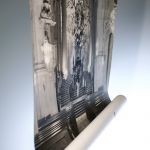
26 July – 30 August
The successful production from the previous year, Cavalieri’s Rappresentatione di anima e di corpo – with the Mozarteum Orchestra – relocated in 1969 to the Kollegienkirche, where it remained in the repertoire until 1973. It was the first time since 1922 that the Kollegienkirche was used again as a venue for the Salzburg Festival.
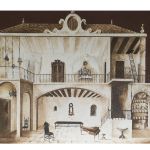
26 July – 30 August
During the climax of the student and civil rights movement, Salzburg celebrated the revival of the Baroque Theatre of the World with Emilio de’ Cavalieri’s Rappresentatione di anima e di corpo, likewise the Italian opera buffa.

26 July – 30 August
Straight drama still had a hard time to vie with the dominance of the opera, which had a huge Cinemascope stage at its disposal in the Large Festival Hall. But the latter wasn’t suitable for straight drama productions.
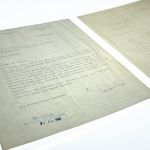
24 July – 30 August
After the première of Rudolf Wagner-Régeny’s Das Bergwerk zu Falun/The Mines of Falun after a text by Hofmannsthal, in 1961 the tradition of regular opera world premières was interrupted. In 1966, there was once more a world première of an opera: Christoph von Dohnányi and Gustav Rudolf Sellner premièred Hans Werner Henze’s The Bassarids.
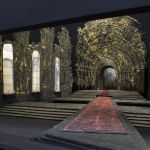
26 July – 31 August
In May 1964, Karajan had announced his resignation as director of the Vienna State Opera. In August of that year he became a member of the Board of Directors of the Salzburg Festival.
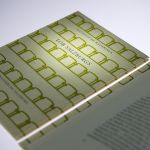
26 July – 31 August
For the first time, the Salzburg Festival was inaugurated with a ceremonial address. ‘International writers, thinkers and heralds of a world view will in future be called at the beginning to direct the message of their expectations towards Salzburg’.

26 July – 31 August
While many costume sketches have been preserved in the Archive of Salzburg Festival, historical materials and objects are kept in storage: besides costumes it holds old sewing equipment, pattern books, mannequin heads, shoe lasts, and this swatchbook with fabric patterns from 1963 on.

26 July – 31 August
In 1962, Salzburg mourned two artists whose work had had a great influence on the Festival in the past decades: Bruno Walter died on 17 February; before 1938 he had been one of the leading conductors of the Salzburg Festival and musical director of numerous opera productions. He was followed on 30 June by Caspar Neher. He had created a multitude of stage and costume designs since 1947.
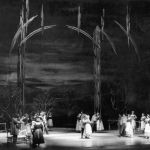
26 July – 31 August
Baron Heinrich Puthon, the Festival’s longstanding president who stepped down the preceding year, died on 23 April at the age of 91. The Grosses Festspielhaus was given over to spoken drama with a new production by Leopold Lindtberg of Goethe’s Faust, Part 1 – an experiment which, apart from performances of Jedermann during poor weather, was never repeated.
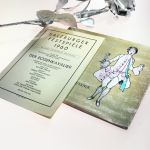
26 July – 30 August
The new Large Festival Hall – after plans by Clemens Holzmeister – was opened on the morning of 26 July 1960 with an official ceremony under the musical direction of Herbert von Karajan.
26 July – 31 August
In May 1964, Karajan had announced his resignation as director of the Vienna State Opera. In August of that year he became a member of the Board of Directors of the Salzburg Festival.
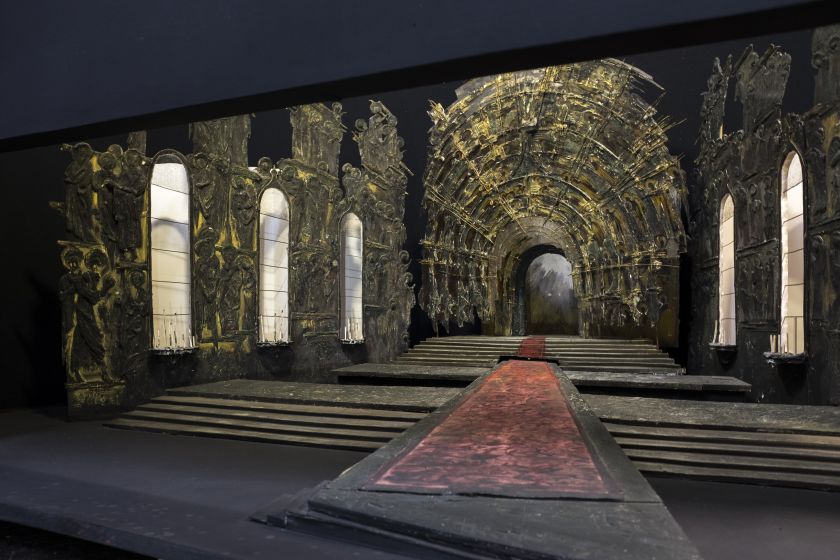
In the Large Festival Hall, Karajan endeavoured to interpret his productions as a synthesis of the arts, a Gesamtkunstwerk. He found an ideal partner in the set designer Günther Schneider-Siemssen.
Herbert von Karajan first worked with Günther Schneider-Siemssen in Salzburg in 1965. They produced one of the most illustrious highlights in Festival history with Mussorgsky’s Boris Godunov. Schneider-Siemssen became Karajan’s favoured scenic designer. With his ingenious projection techniques – he called it ‘painting with light’ – he conjured up impressive stage spaces and shaped stage aesthetics for years in the Karajan era.
The Italian stage director Giorgio Strehler debuted in Salzburg in 1965 as well, with Mozart’s Entführung aus dem Serail/Abduction from the Seraglio in the remarkable stage set by Luciano Damiani; Zubin Mehta was the conductor. Mehta’s fellow student of former days, Claudio Abbado, in turn made his Salzburg début on the rostrum of the Vienna Philharmonic Orchestra.
